An Overview of
Gas Flow Measurement
Many applications require accurate flowrate measurement for air or other gases. Installation requirements, calibration and maintenance are among the factors that must be considered when selecting a flow-measurement technology
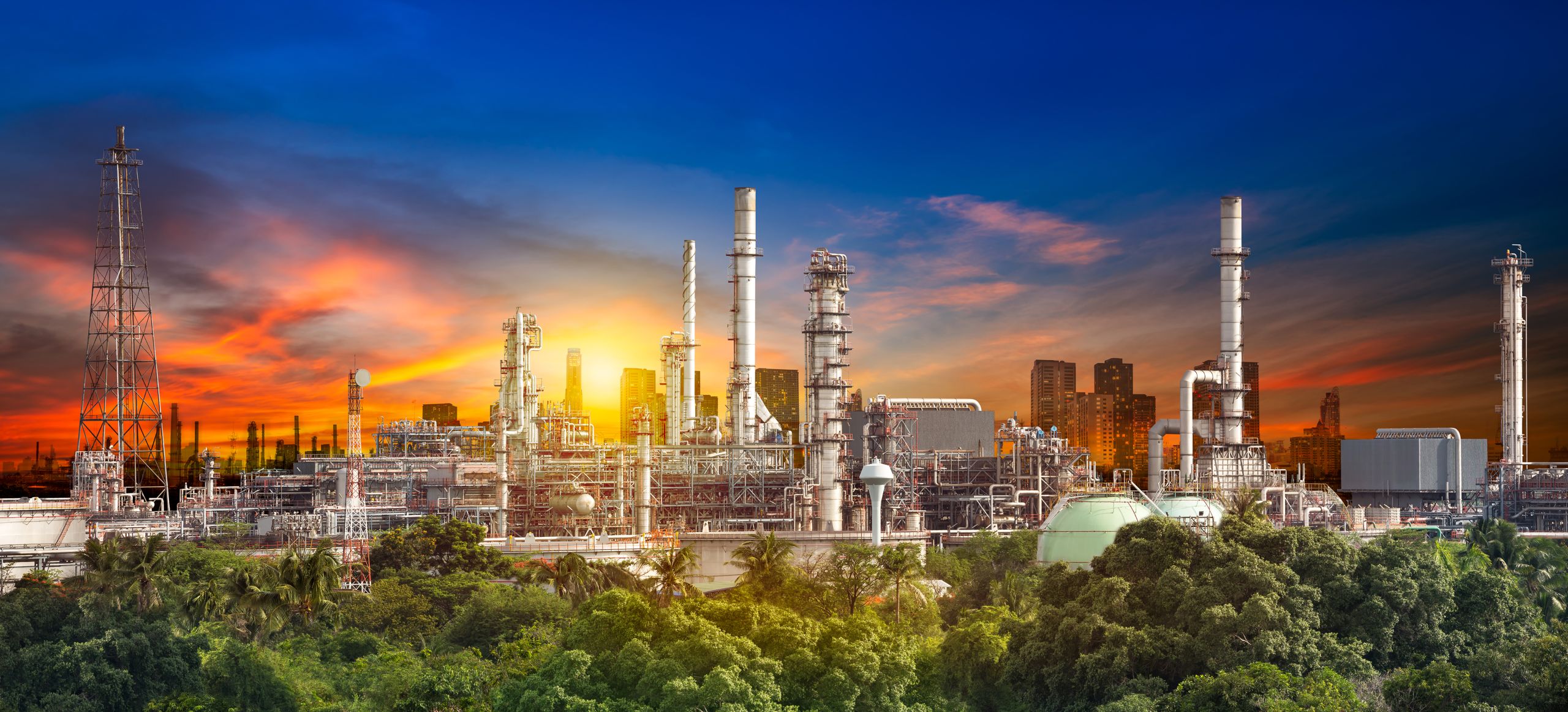
The measurement of air and other gases in manufacturing plants in the chemical process industries (CPI) is essential in many functional applications, including safety, process control, product quality, production efficiency, environmental compliance and costs. When the measurement of air or other gases is inaccurate or inconsistent, some potential outcomes include serious accidents, emergency shutdowns, unplanned maintenance, production slowdowns or cost overruns.
There are six to eight viable flow measurement technologies for gases available today, but only about half of them are suitable for the heavy-duty metering applications found in the most challenging CPI operations. Each technology has its own strengths and weaknesses, depending on exactly what material needs to be measured, the required accuracy, where it needs to be measured and so on.
The truism “knowledge is power” definitely applies when it comes to choosing a flowmeter for gas measurement tasks in CPI plants. The same flow-sensing technology that is chosen for one application in a plant is quite possibly the wrong choice in a different application — even one that is in close proximity within a facility.
The cost of choosing the wrong flowmeter — in terms of extra maintenance, repairs and spares in large CPI plants — can add up quickly to tens of thousands of dollars. If safety events, poor product quality, a production slowdown or environmental compliance issues occur, then the cost of failing to recognize the subtle differences in air and other gas flow-measurement technologies can be punitive.
Common measurement applications
Flowmeters are used to measure the flowrate of air or other gases, as well as totalized flow. Due to the hazardous operating environments that may be encountered in CPI plants, gas flowmeters generally require approvals for hazardous areas (for instance, HazEx) and often must be compliant with the IEC 61508/61511 (SIL) standard as part of a Safety Instrumented System (SIS) in many applications. Four of the most common and the most demanding gas flow-measurement applications in chemical plants are described in the following sections.
Gas distribution metering. Many chemical processes require large varying volumes of specific gases, such as nitrogen, argon and oxygen for inert ions or purging or blanketing. Hydrogen may be required as a catalyst and other specific gases are used as well (Figure 1). The accurate measurement of these gases is necessary for process control, gas-inventory control and cost management.
Flaring systems. In petrochemical production, refining and storage, flare gas systems are used to burn off and dispose of waste, excess or off-gases and as a safety system (Figure 2). The accurate, responsive and reliable measurement of flare gas is essential in order to assure proper operation of the flare gas system, which protects people and equipment from hazardous combustible gases to maintain a safe working environment and to avoid environmental contamination.
Tank blanketing. Nitrogen blanketing is used in the chemical and petroleum refining industries to reduce the hazards associated with flammable liquids, which helps to support plant safety and can also increase productivity. Blanketing or padding is the process of applying inert nitrogen gas to the vapor space of a tank or vessel (Figure 3), which minimizes the possibility of an explosion or fire by reducing the oxygen content or the concentration of flammable or explosive vapors.
Stack gas monitoring. Measuring the output of plant waste gases through large stacks with scrubber systems requires multiple flow sensors, which are placed in strategic locations (Figure 4). These stack-gas systems are critical for ensuring environmental compliance. Stack continuous emission monitoring systems (CEMS) must meet several standards, including: U.S. Environmental Protection Agency (EPA) 10 CFR 40 and 40 CFR 98; E.U. Directives 2003/87/EC and 2007/589/EC; U.S. MMR 30 CFR Part 250, Subpart K, Section 250; and others.
Gas-flow challenges
Applications that demand accurate, dependable gas-flow measurement present challenges to process and instrument engineers. The following sections describe specific considerations that require careful attention when choosing a flow measurement or sensing technology.
Low and high flows. Sensitivity to low-flow conditions is required to identify and measure leaking valves and the normal low-flow operation associated with day-to-day operations. The capability to measure very high flows is needed during system upset conditions, requiring a meter that needs to measure flow accurately over an extremely wide turndown range.
Meter calibration. It is essential that flowmeters be calibrated specifically for hydrocarbon composition gases and to match actual process conditions.
Large line sizes. As pipe sizes increase, the number of effective and suitable flowmeter sensing technologies decreases. It becomes imperative that special considerations are taken when selecting a flowmeter for larger lines.
Available straight-run. All velocity-based flowmeter technologies require a certain amount of straight-run pipe both upstream and downstream of the meter in order to achieve accurate flow measurement. These straight-run requirements may not be achievable in crowded production sites and process plants.
Limited access. Access and re-access to piping for installation, maintenance or servicing is frequently difficult. For example, spool-piece flowmeters can require prolonged process shutdowns and extensive onsite labor costs to install and continuously maintain the system, as opposed to insertion-style meters that can be easily inserted into or retracted out of the process through a ball valve.
Agency approvals. When installing meters in hazardous (Ex) locations, the entire flow-metering instrument should carry agency approval credentials for installation in environments with potential hazardous gases. Note that enclosure-only ratings are inadequate.
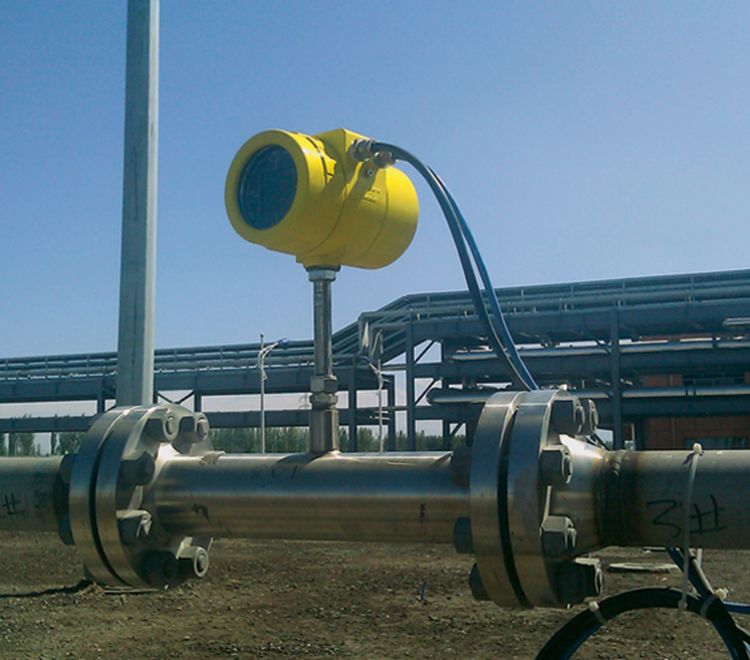
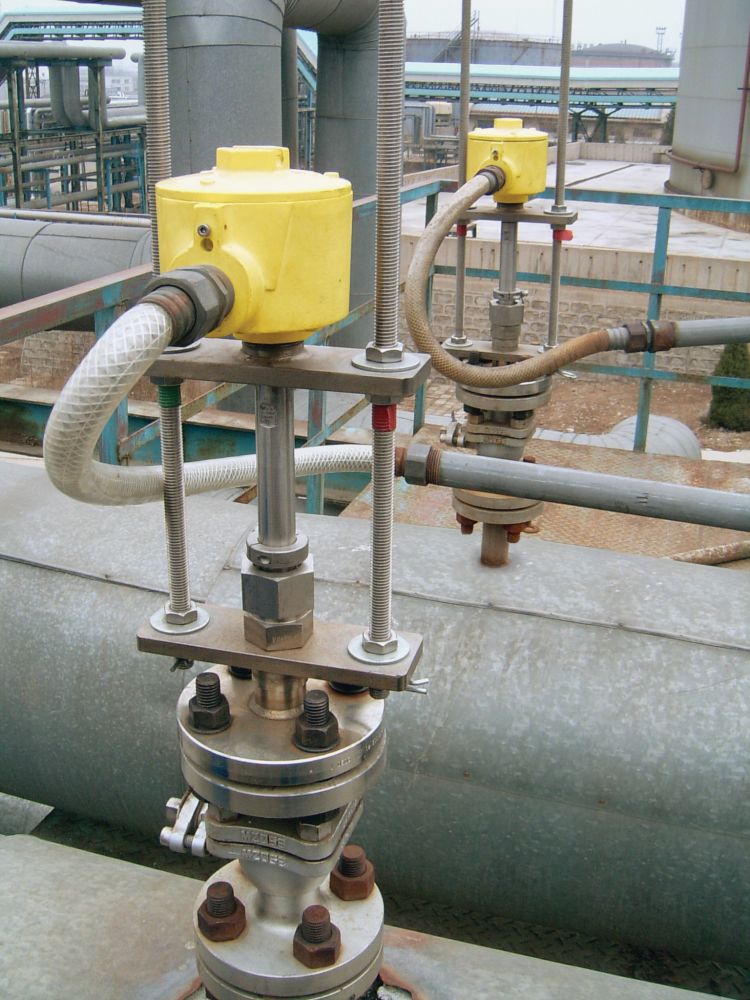
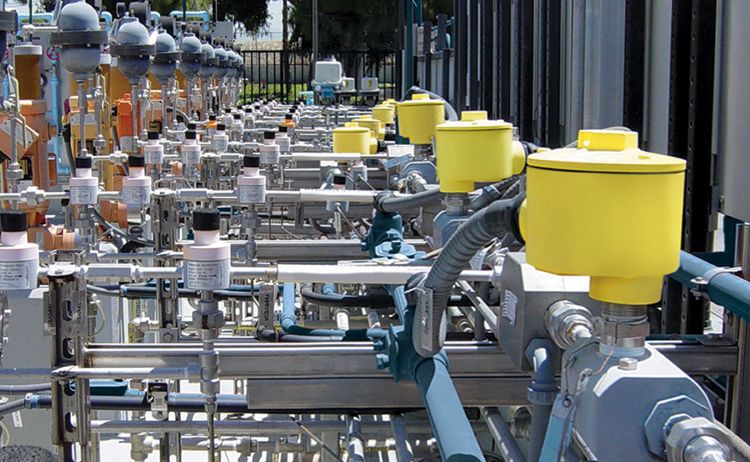
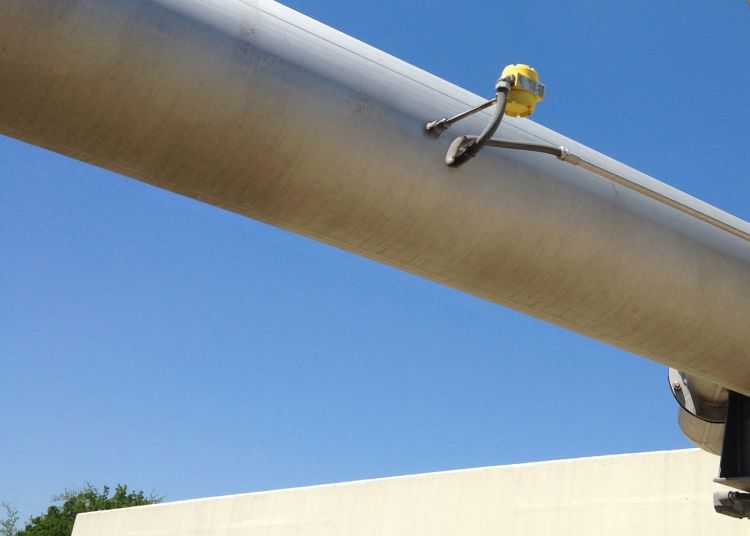
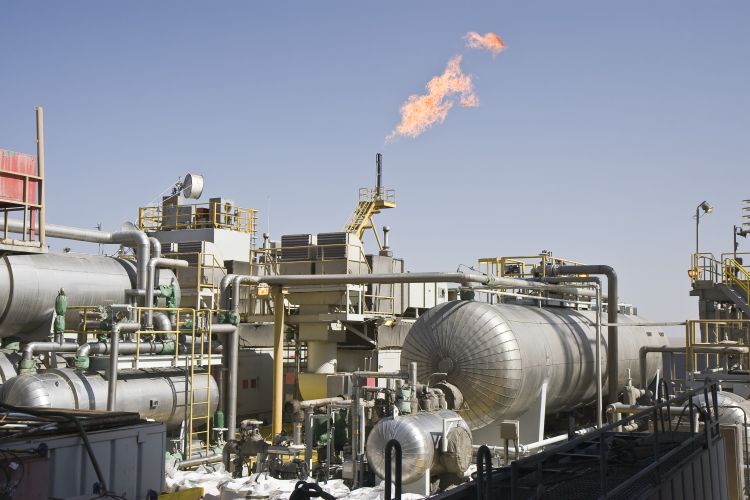
Gas-measurement technologies
There are two basic types of flowmeters: liquid and gas. Liquid is primarily measured in terms of volumetric flowrate, while gas is a mass-flow measurement because of the unique properties of gases when compared to liquids. While some volumetric technologies can measure gas flowrates, there can be problems with totalized flow. Generally, the best choice is mass-flow sensing technology when measuring air or other gases — especially in critical applications.
Coriolis. The principle of operation for Coriolis flowmeters relies on a vibrating tube where the flow of fluid causes changes in frequency, phase shift or amplitude, which is proportional to the mass flowrate. Coriolis meters are highly accurate and are frequently used in custody transfer applications, but they are on the expensive side and require labor-intensive inline applications.
Differential pressure. Differential pressure (DP) meters and sensors come in several designs, including orifice plates, pitot tubes and Venturis. The typical DP meter designs require the fluid to move through or past two points of reference, creating a differential pressure rate that is equivalent to the rate of flow using the Bernoulli equation with some modifications. If the gas is dirty, there can be orifice clogging issues that require frequent maintenance in order to maintain accuracy.
Ultrasonic. Flowmeters designed with ultrasonic flow-sensing technology rely on ultrasound and the Doppler effect to measure volumetric flowrate. In ultrasonic flowmeters, a transducer emits a beam of ultrasound to a receiving transducer. The transmitted frequency of the beam is altered linearly by particles or bubbles in the fluid stream. The shift in frequencies between the transmitter and receiver can be used to generate a signal proportional to the flowrate.
Optical. Flowmeters designed with optical sensing rely on laser technology and photo detectors. This technology requires the presence of particles in the gas stream. These particles scatter the light beam, and the time it takes for these particles to travel from one laser beam to the other laser beam can be used to calculate the gas velocity and volumetric flowrate. These meters have good accuracy and wide turndown, but are traditionally expensive.
Thermal dispersion. Flowmeters with thermal-dispersion sensors provide direct mass-flow measurement. Two thermowell-protected platinum resistance temperature detector (RTD) sensors are placed in the process stream. One RTD is heated while the other senses the actual process temperature. The temperature difference between these sensors generates a voltage output, which is proportional to the media cooling effect. This information can be used to measure the gas mass flowrate without the need for additional pressure or temperature transmitters.
In measuring flow accurately, second only to selecting the proper flow sensing technique is the method of calibration. There are two methods used in calibrating gas flowmeters, as follows:The direct method, where the meter is calibrated to a specific pure process gas or to the actual components of a mixed gas in use.
The air equivalency method, where the meter is calibrated using air, and then the calibration is adjusted with a pre-defined correction factor.
It is important to ask your supplier about the method of flowmeter calibration. Users should know if manufacturers contract out for calibration and if so, with whom, or if they operate their own calibration laboratory with direct-method calibration test stands and equipment that is traceable in accordance with NIST and ISO/IEC 17025 standards.
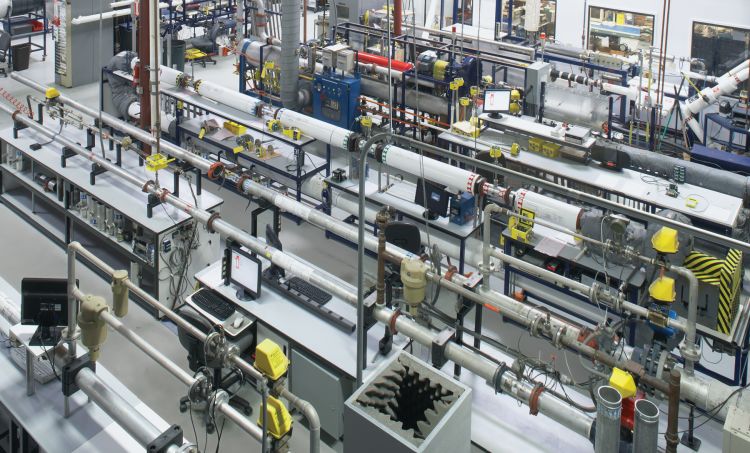
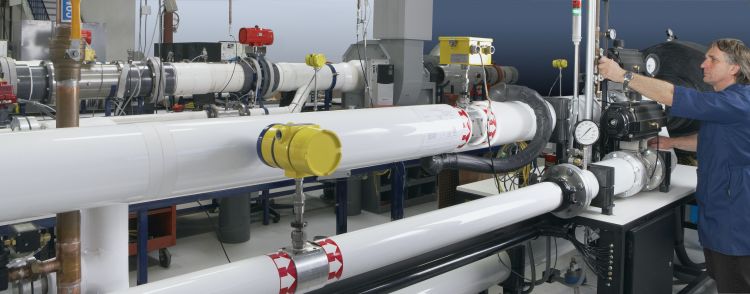
Installation considerations
When choosing a flowmeter technology for air or other gases, one of the most important criteria to consider is the location and the manufacturer’s installation requirements. Most flowmeter technologies require a stable fluid-flow profile upstream and downstream from the point of meter installation — this is usually defined as equivalent to a specific number of pipe diameters of straight-run pipe in each direction. Flow sensors are potentially sensitive to swirling air or gas conditions in the pipe, pressure drops (turndowns) or flow surges. In many cases, irregular flow issues can be solved with flow conditioners. There are various types of flow conditioners that can be inserted strategically in the pipe to “straighten” the flow before it reaches the flow sensor. They may consist of tabs, honeycombs, vanes or other designs, which all serve to straighten the flow. Some straighteners, such as the tab type, actually speed up the rate of flow by creating regular vortices to avoid any loss of gas throughput (pressure drop).
There are two ways to install a flowmeter: inline or insertion. Inline flowmeters must be installed horizontally inside a section of the pipe. Insertion flowmeters are top-mounted through a tap point.
Some flowmeters can only be installed using one method. Venturi meters, for example, must be installed inline (inside the pipe). In comparison, thermal meters, some DP meters (orifice plates) and others can be installed in either inline or insertion configurations.
Lastly, when considering installation requirements, some flowmeter technologies rely on direct mass-flow sensors. Other flowmeters infer mass flow and require pressure or temperature sensors to be installed nearby, along with transmitters, or multivariable transmitters, which can add to their cost and installation complexity.
Maintenance requirements
All flowmeters require maintenance. Some technologies, however, may require more maintenance than others. The type of fluid to be measured can have a major impact on maintenance needs. Pure process gases in a benign plant environment are generally going to have less impact on a flowmeter than dirty waste gases.
Some meter designs require less cleaning or are easier to clean than others. For example, top-mount insertion-style meters with packing glands can be quickly pulled out of the pipe without shutting down the process and cleaned in place with compressed air and subsequently returned to service.
Accounting for cost
There are many factors to consider when choosing a flowmeter for CPI applications. A thorough checklist of considerations would include the following:
- Accuracy
- Repeatability
- Flow sensor technology
- Calibration type
- Installation requirements
- MaintenanceCost

In considering the cost of a flowmeter, there are three crucial factors to think about: the purchase price of the meter; the installed cost; and the lifecycle cost.
Stopping your analysis at the purchase price is misleading when it comes to reviewing the true cost of instrumentation — this is especially true for flowmeters.
The two previously discussed options for flowmeter installation — inline and insertion — may result in large differences when it comes to costs. Flowmeters installed in an insertion configuration are simpler to install,
which is going to generally result in a lower installed cost versus a flowmeter that is less expensive to purchase, although it requires inline installation.
The last factor to consider is the lifecycle cost. How long does the manufacturer expect the flowmeter to remain in service? Is its life span 5, 10 or 20 years? Over that lifetime, what kind of maintenance will be required? Some meters
have movable parts that can break and require repair. Some meters depend on small orifices that tend to narrow or clog in dirty environments, requiring cleaning. These expenses can add up over time, which increases the cost of ownership.
In conclusion, knowledge and experience with flowmeters is power. The more that engineers know about flowmeter technologies, the more thorough and effective the selection process will become.

Art Womack
Art Womack
Art Womack is a senior applications engineer at Fluid Components International (FCI; 1755 La Costa Meadows Drive, San Marcos, CA, 92078; Phone: 760-744-6950; Email: [email protected].) He has over 20 years of experience in the design, production, application, sales and marketing of flow, level, pressure and temperature process instrumentation. He holds a B.S. in electrical engineering from Rose-Hulman Institute of Technology in Terre Haute, Ind. Prior to working at FCI, Womack held positions at SOR Controls Group and Dwyer Instruments.
Edited by Mary Page Bailey.

